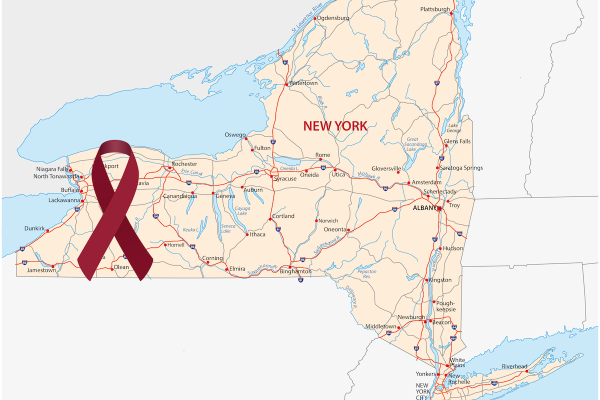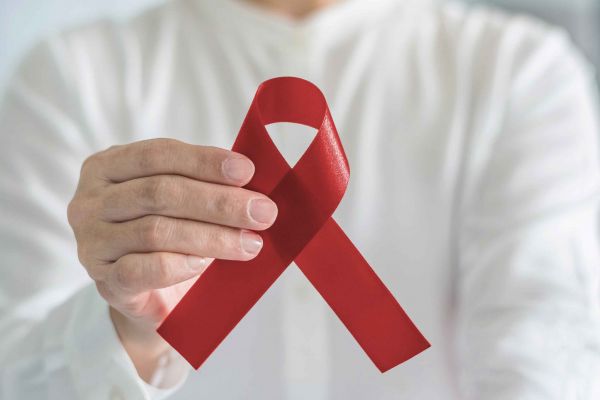A recent study identifies rare gene mutations that can increase multiple myeloma risk
Until recently, multiple myeloma has not been considered hereditary, although there are familial risks for developing the rare blood cancer.
But an unprecedented genetic study led by Kenan Onel, MD, PhD, Chief of Clinical Genomics at Roswell Park Comprehensive Cancer Center, has definitively associated the risk of multiple myeloma in some individuals with inherited differences in their BRCA1 and BRCA2 genes.
Myeloma is a rare blood cancer that affects plasma cells. Plasma cells are a type of white blood cells; when these cells multiply uncontrollably and become cancerous, they crowd out your healthy cells. Abnormal plasma cells are called myeloma, and when they build up in multiple locations in your bone marrow — the soft matter inside your bones where most of the body’s blood cells are made — the disease is called multiple myeloma.
Dr. Onel’s novel investigation, published September 16 in Blood Cancer Discovery, a journal of the American Association for Cancer Research, discovered that when compared with healthy subjects, multiple myeloma patients were more likely to have inherited changes called pathogenic germline variants (PGVs) in the BRCA1, BRCA2, and other genes that dramatically increase cancer risk.
Mutations of BRCA genes, which are charged with repairing DNA and preventing the formation of tumors, increase the risk of developing breast, ovarian, prostate, pancreatic and other cancers. The new research found that patients with BRCA genes that contained PGVs were more likely to be diagnosed with multiple myeloma at a younger age and have a personal or family history of cancer.
Risk factors among your family
Some cancers result from gene mutations that cause cells to grow erratically. Before Dr. Onel’s discovery, gene mutations connected to multiple myeloma were considered a predisposition to the disease among first degree family members, rather than inherited genetic anomaly.
“There is a four-times higher risk of being diagnosed among first degree relatives,” explains Roswell Park's Jens Hillengass, MD, PhD, Chief of Myeloma.
First degree relatives include parents, siblings and children. For example, the highest familial risk is among daughters whose mother has been diagnosed with multiple myeloma. This risk may now be considered higher if any of the family members are determined have a PGV mutation in their BRCA1 or BRCA2 gene.
Other known risk factors for developing multiple myeloma include:
- Obesity
- Gender (males are more commonly diagnosed than females)
- Exposure to radiation
- Using alcohol
- Smoking tobacco
- African heritage or descent
African Americans have a higher risk
Myeloma is always preceded by an asymptomatic blood disorder called monoclonal gammopathy of undetermined significance (MGUS). MGUS is also considered a risk factor for myeloma, and occurs more often in African Americans.
According to current estimates, by 2034, roughly 24% of newly diagnosed multiple myeloma cases in the United States are expected to be among African Americans, despite only making up around 14% of the overall population. This means that nearly 1 in 4 new multiple myeloma patients will be African American by 2034.
Studies have found that people of African descent are more likely to be diagnosed at an earlier age, and three times more likely to be diagnosed under the age of 50. (The average age of multiple myeloma diagnosis for African Americans is 66 compared to 70 among white people.)
African Americans with a family history of multiple myeloma also have a higher risk of developing the cancer than their white counterparts with multiple myeloma in their family history. Studies also show that the disparity extends to people of African heritage in multiple countries.
Need to include more people of color in oncology research
The ability to clearly define the connection between race and cancer – including the recently identified genetic mutations of the BRCA1 and BRCA2 gene – is largely dependent on increased black, indigenous and people of color participation in oncology research, including clinical trials and trials for new treatments.
“There is still a hesitancy to participate in clinical trials, and we understand this is connected to historical issues of healthcare disparity,” Dr. Hillengass suggests of the lack of participation in clinical trials.
Dr. Onel agrees that diversity in cancer research is important: “Because there were so few non-white individuals in our data set, we were not able to investigate differences based on ancestry,” he says of his recent study. “An important caveat is that results from one population may not apply to other populations, so there is a critical need for future studies to be more inclusive.”
Why Roswell Park for multiple myeloma treatment?
Cutting-edge therapies, comprehensive care and world-class doctors make Roswell Park unique in treating your multiple myeloma.
New therapies available at Roswell Park offer new hope
New treatments have increased the survival rate of multiple myeloma from 35% in 2000 to 50% in 2020: Five-year relative survival rates are similar between Black (53.9 %) and white (51.3%) Americans as well. The current standard of care for multiple myeloma is treatment with a combination of three or four drugs, which may include chemotherapy, immunotherapy, proteasome inhibitors, monoclonal antibodies, steroids and other therapies.
Dr. Hillengass believes novel cellular therapies now available at Roswell Park mean new hope and are changing the outlook for people diagnosed with multiple myeloma. Cellular therapy uses living cells instead of pharmaceutical compounds to destroy and kill cancer cells, and often defines patients’ own cells as the “drug.”
“We are getting closer to a cure, especially with our new focus with cellular therapies,” Dr. Hillengass says.





